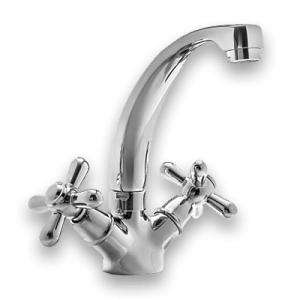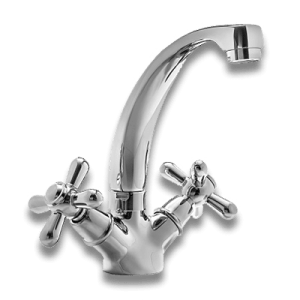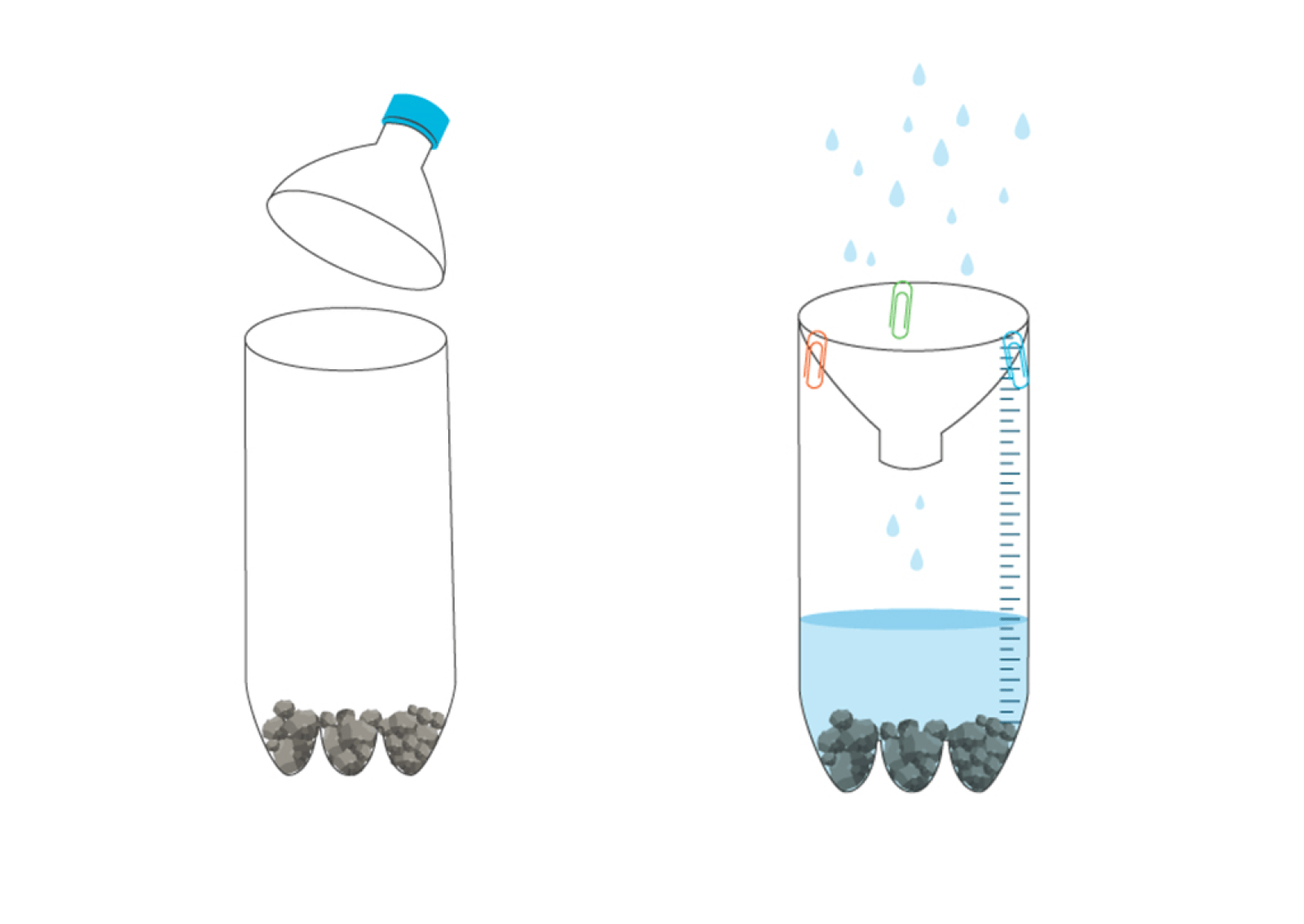
Overview
Rain is an important part of the water cycle so let’s conduct a rainy day experiment to better understand precipitation and the importance of H2O. Make rain gauges out of empty pop bottles, then measure and track how much rain falls in a day.
Instructions
What you'll need
- “Water cycle” image
- “Catch the rain” worksheet
- Each group of three students will need:
- Clear plastic bottle (500 mL to 2 L)
- Small pebbles or marbles
- Paper clips or tape
- Ruler
- Begin by talking about rain and its important role in the water cycle. Point out rain – a form of precipitation – on the “Water cycle” image.
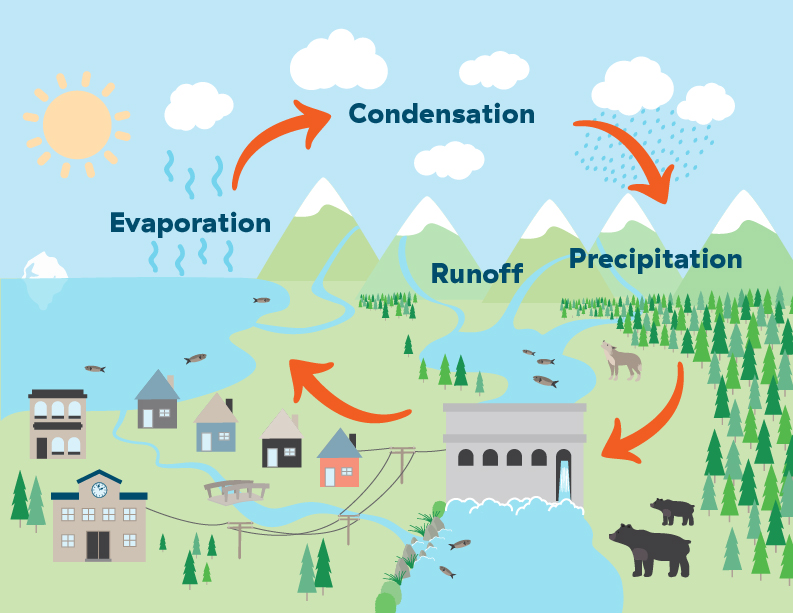
- Now let’s dive into an experiment to discover how much rain actually falls. Divide the class into small groups and have them each build a rain gauge.
- Cut the top off the plastic bottle (students may need help with this step), then place pebbles or marbles at the bottom to stabilize it.
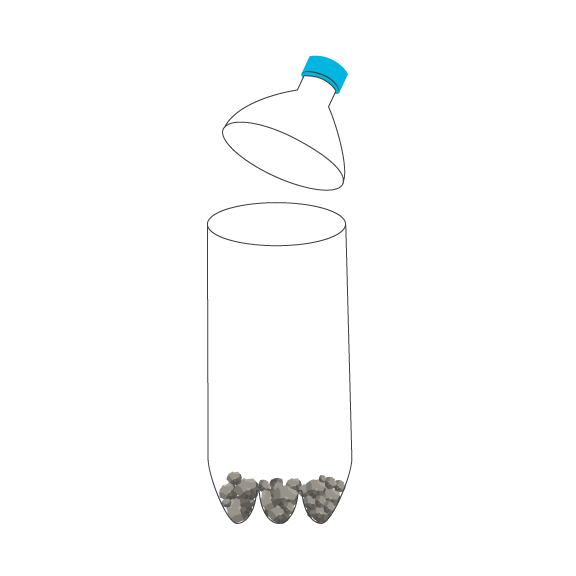
- Pour water into the bottle until it cover the pebbles. Use a ruler and permanent marker to mark the bottle with 1 cm increments, starting at the water line.
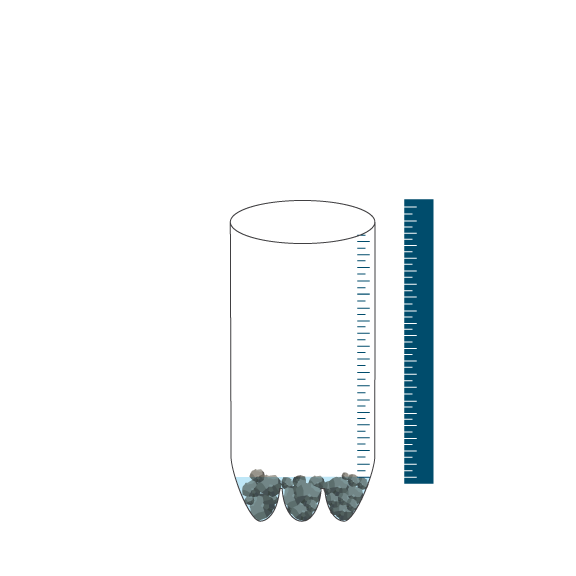
- Turn the top of the bottle upside down and put it in the base to act as a rain collector. Secure with paper clips or tape if needed and make sure the cap’s been removed.
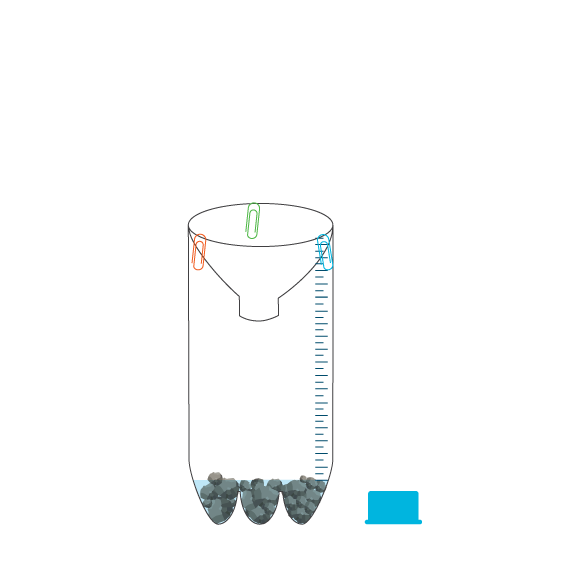
- Find a flat, open space outside to put the rain gauge. Let it rain!
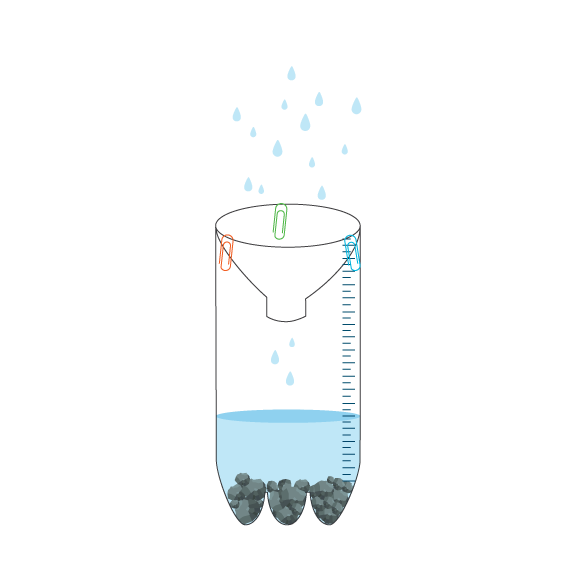
- Have students measure and record their observations on the “Catch the rain” worksheet. A few tips:
- Check at the same time every day.
- Measure rainfall by getting down to eye level with water line.
- Observations could include weather, things they were surprised by, etc.
- After a week or two, compare findings.
- Talk with students about rainfall and how much water we use. Can they guess how much water we use for the following activities?
- If you leave the tap running when you brush your teeth, you use about 10 litres of water.
- On average, flushing the toilet uses 15 to 19 litres of water.
- An average bath uses about 80 litres of water.
- That’s a lot of water. And that’s why we have to think about how much water we use and take care of our water sources.
Modify or extend this activity
- Have students compare the measurements between rain gauges and with local weather stations. Discuss reasons for variations in measured rainfall.
- Watch a fun video and lead a quick activity about the “Power of falling water”.
Curriculum Fit
Grade 2 Science
Content
- Water sources
- Water conservation
- Water cycle
Curricular competencies
Questioning and predicting
- Observe objects and events in familiar contexts
Planning and conducting
- Make and record observations
- Make and record simple measurements using informal or non-standard methods
Processing and analyzing data and information
- Experience and interpret the local environment
- Sort and classify data and information using drawings, pictographs and provided tables
- Compare observations with those of others
Evaluating
- Consider some environmental consequences of their actions
Assessments
- Assess student participation and group work.
- Assess “Catch the rain” worksheet for ability to make and record measurements and observations.
Teaching Notes
Water in our lives
In British Columbia, we use about 300 litres of water per person per day (Statistics Canada, 2013). We use water every day to drink, flush our toilets, brush our teeth, run our baths, grow and cook our food, wash our dishes and clothes, and make our electricity. Our province has a lot of surface water in lakes and rivers, but despite this, only one per cent of water on Earth is readily accessible. When students understand how they use water, they can explore ways to reduce their water use.





